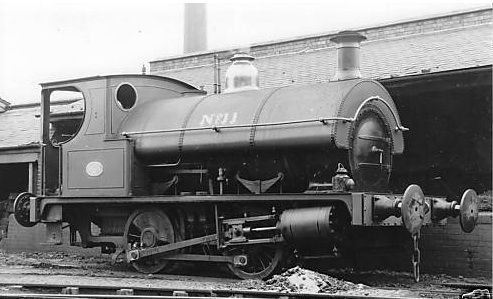After a bit of research I have come up with the following.
The Bass locomotive stud was inaugurated in 1861, by the acquisition of an engine described as a "square top tank." This pioneer was built at Burton, by the local firm of Thornewill and Warham. Two years later, a second engine was delivered from the same factory. This was an 0-4-0 saddle tank, a design since adopted as the standard. The stock consisted of eight locomotives, known respectively as "Class A" and "Class B." The former have 3 ft. 6 in. coupled wheels, a working pressure of 135 lb. per sq. in., and weigh, unladen, 23-1/2 tons. The cylinder dimensions are 14 in. by 21 in. These engines were built between 1899 and 1913 by the North British Locomotive Company, Ltd., Glasgow. The "Class B" locomotives are much older. One, also constructed by Thornewill and Warham, was built in 1869 ; while the second, one of the two originally known as the "Triangle" class, was built in 1890. Since then it has been twice rebuilt—in 1909 and 1924. The leading dimensions of the "Class B" engines are : coupled wheel diameter 4ft., working pressure 120 lb., unladen weight 22-1/4 tons, cylinders 14 in. by 20 in.
Thornewill and Warham were taken over by Briggs, now in Derby St.
I'm just about to research the North British Locomotive Company.
I'll be getting in touch with both to see if they still hold the drawings (and pigs might fly)
MICHAEL WILLIAMS.





